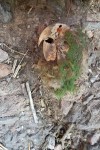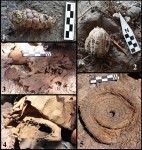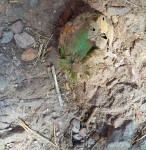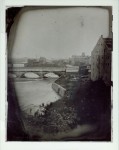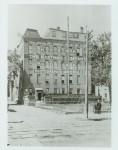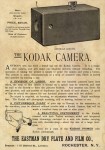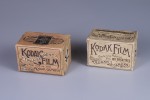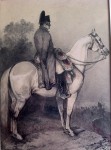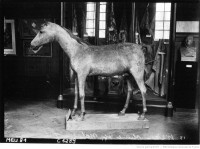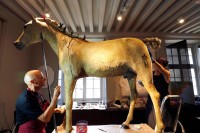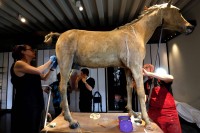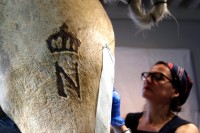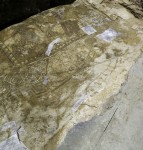 Workers digging an extension of a sewer line in Larnaca on the southern coast of Cyprus last month uncovered a large Roman mosaic depicting the Labours of Hercules. Archaeologists took over to excavate the unique work and have thus far unearthed a section 19 meters (62 feet) long by seven meters (23 feet) wide.
Workers digging an extension of a sewer line in Larnaca on the southern coast of Cyprus last month uncovered a large Roman mosaic depicting the Labours of Hercules. Archaeologists took over to excavate the unique work and have thus far unearthed a section 19 meters (62 feet) long by seven meters (23 feet) wide.
The mosaic appears to be part of a baths complex, Antiquities Department Chief Marina Solomidou-Ieronymidou said, adding that it has five sections but only two have been fully uncovered. Crews may have to encroach on private property to unearth more of the baths complex.
Solomonidou-Ieronymidou said it’s the first time that a mosaic has been discovered on the eastern Mediterranean island depicting the 12 Labors of Hercules, difficult tasks that the mythological demi-god had to perform as penance for killing his wife and children when the goddess Hera made him temporarily insane.
The Antiquities Department says the mosaic’s discovery offers important evidence that ancient Kition, on which modern-day Larnaca is built, played a significant role in the establishment of Roman culture in the Mediterranean island of Cyprus.
Kition was founded by Achaean colonists in the 13th century B.C. and was subsequently ruled by Mycenae, Assyria, Phoenicia, Egypt, Persia, and Macedonian general Ptolemy and his descendants, also rulers of Egypt. It became a Roman province in 58 B.C. with a brief interlude back in Ptolemaic hands when Marc Antony declared Cleopatra and Caesarion, her son by Julius Caesar, Queen and King of Cyprus as part of the Donations of Alexandria in 34 B.C. After Antony and Cleopatra’s defeat at the Battle of Actium in 31 B.C., Cyprus returned to Roman control. When the Roman Empire was divided into Western and Eastern in 395 A.D., Cyprus went to the Eastern Empire. It remained Byzantine until the 12th century when it was taken by King Richard the Lionheart of England and became one of the crusader states ruled by Guy de Lusignan and his descendants until 1474. Venice took it from them and the Ottoman Empire took it from Venice in 1571.
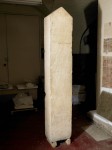 Kition, meanwhile, suffered most at the hands of natural disasters. Two massive earthquakes in 322 and 342 A.D. all but leveled the city. Larnaca was built on its ruins but because the harbour had silted over, it moved a little to the south following the new shoreline. The ancient ruins of Kition began to be systematically excavated in the 1920s. Its most ancient remains are Achaean defensive walls from the 13th century B.C. and temples and parts of their Cyclopean walls from the Mycenaean period. Remains have been found from the Assyrian and Phoenician periods as well, including the famous stele of Sargon II, now in the Berlin State Museums, and Phoenician funerary stele now in the British Museum. More than 3,000 tombs were unearthed in a massive Phoenician-era necropolis.
Kition, meanwhile, suffered most at the hands of natural disasters. Two massive earthquakes in 322 and 342 A.D. all but leveled the city. Larnaca was built on its ruins but because the harbour had silted over, it moved a little to the south following the new shoreline. The ancient ruins of Kition began to be systematically excavated in the 1920s. Its most ancient remains are Achaean defensive walls from the 13th century B.C. and temples and parts of their Cyclopean walls from the Mycenaean period. Remains have been found from the Assyrian and Phoenician periods as well, including the famous stele of Sargon II, now in the Berlin State Museums, and Phoenician funerary stele now in the British Museum. More than 3,000 tombs were unearthed in a massive Phoenician-era necropolis.
And yet, even with 400 years of Roman rule under its historical belt, Kition has next to no archaeological material to show for it. That’s why the discovery of the mosaic is so significant. It’s not just an important artwork with a theme that has not been found before on Cyprus, but the only remains of a large-scale public building from the Roman period found in Larnaca.
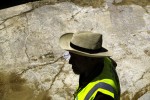 There was some discussion of leaving the mosaic in place, rerouting the road and creating an open-air museum that might prove as much of a draw to tourists as the exquisite mosaic floors found in the remains of four Roman villas in Paphos on the west coast of Cyprus. Larnaca’s Deputy Mayor Petros Christodoulou was quoted as saying “This finding is too important and precious to cover over, or to remove and set up again in another place.” Communications minister Marios Demetriades apparently disagrees, since he told the press on Thursday that the mosaic would suffer damage from water and the elements if it were left in place, so it will be moved to a new dedicated wing of the Archaeological Museum of the Larnaka District. The Department of Antiquities’ very brief statement on the find avoids the question altogether.
There was some discussion of leaving the mosaic in place, rerouting the road and creating an open-air museum that might prove as much of a draw to tourists as the exquisite mosaic floors found in the remains of four Roman villas in Paphos on the west coast of Cyprus. Larnaca’s Deputy Mayor Petros Christodoulou was quoted as saying “This finding is too important and precious to cover over, or to remove and set up again in another place.” Communications minister Marios Demetriades apparently disagrees, since he told the press on Thursday that the mosaic would suffer damage from water and the elements if it were left in place, so it will be moved to a new dedicated wing of the Archaeological Museum of the Larnaka District. The Department of Antiquities’ very brief statement on the find avoids the question altogether.
